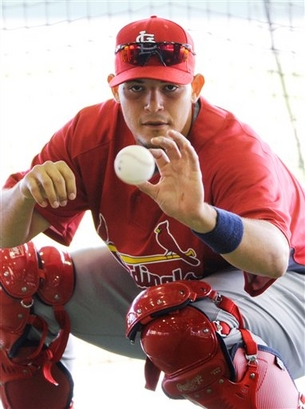Soft hands drill for catchers
December 12, 2012 by Coach McCreary
Filed under Catching, Off-Season
The off-season and especially spring training can be brutal for catchers. With all the emphasis on developing pitchers, often it’s the catchers who are left to simply catch bullpen after bullpen. I’ve written before about the importance of not neglecting your catchers but here is an easy drill that can do a lot to develop those guys behind the plate.
This soft-hands drill has a coach or partner simply lob balls underhand to a squatting catcher who catches the ball with his bare glove hand. Tennis balls work well for younger kids. Older kids should be able to handle hard balls. The distance the coach throws does not have to be more than 10 feet. In the process, the catcher is able to work on the finer points of receiving that include the following:
- Funneling each pitch slightly in (an inch or two) towards the bellybutton to keep the corner pitches in the strike zone and to prevent the pitch from bouncing out of the hand.
- Catching the ball by lightly pinching the index finger to the thumb as the hand closes to catch the ball. This is the proper way the hand would work if the glove was on so it becomes important to do that same technique when catching bare handed. The picture of Yadier Molina to the right shows this technique.
- Good body receiving posture which includes a flat-footed wide base with more weight on the front half of the feet, the catching arm’s elbow above and/or outside the knee, quiet movements, and good balance.
- Tracking the track with your eyes all the way in to the hand. This involves turning the head to look the ball into your hand instead of keeping your head still and just tracking the ball with just your eyes.
- Catching the ball closer to the body if it is a high pitch – this allows gravity to bring the pitch down a bit more before catching – and catching the low pitch farther out front – this allows the catcher to catch the ball before it has a chance to drop down further. Both techniques make it more likely the pitch will be called a strike.
Using drills like this one for your catchers can go a long way in developing their catching skills and also will send the message that this time of year isn’t just for the pitchers.






Leave a Reply